Landscapes and townscapes
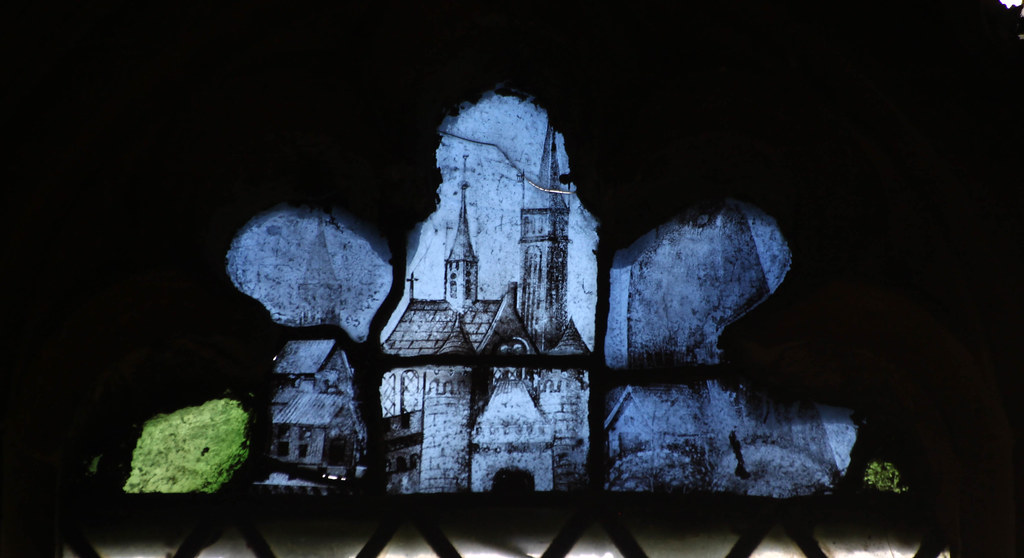
Hillesden church in north Buckinghamshire is an impressive church, a pure, Perpendicular glass house, a coherent whole, all built in a single campaign.
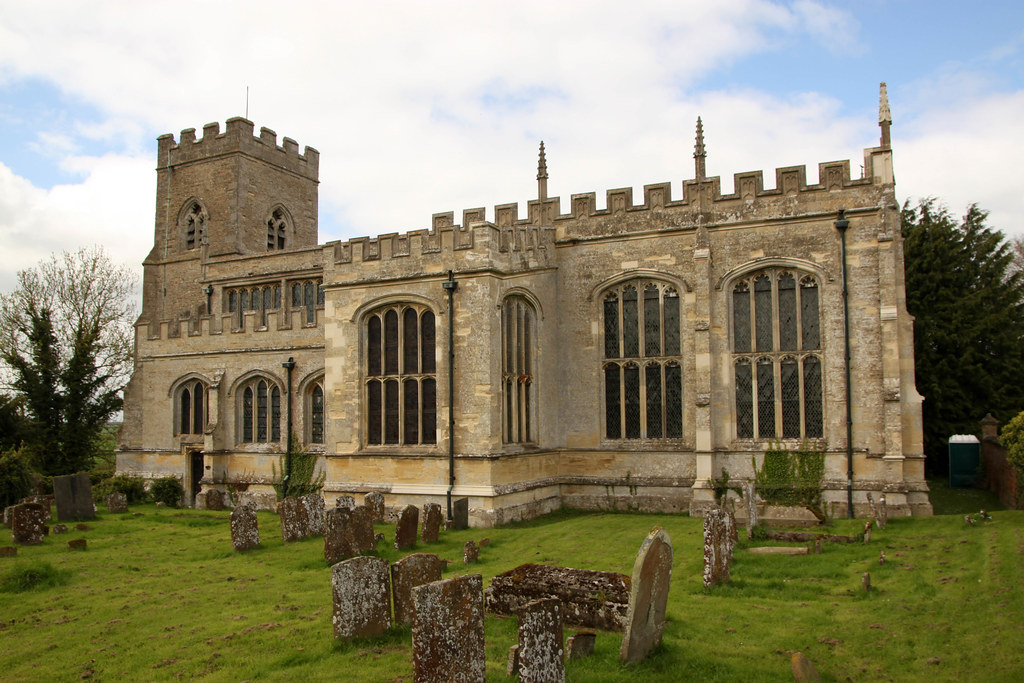
We know that in 1493 the previous church was somewhat ruinous and that provides a terminus post quem for the structure, which appears to have been built in stages up to c.1510. For such an à la mode late medieval church, you would expect there to be an obvious patron. There is no precise evidence whatsoever of who the patron of this great work was, though it has been suggested that it might have been the wealthy Augustinian Abbey of Notley, who were the impropriators of the living.
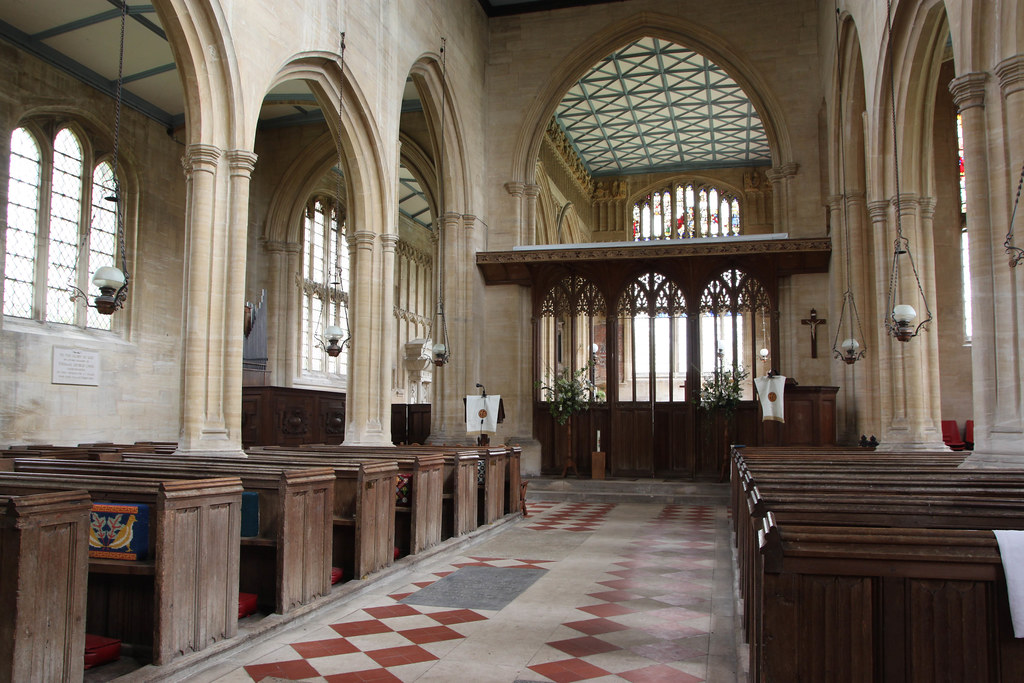
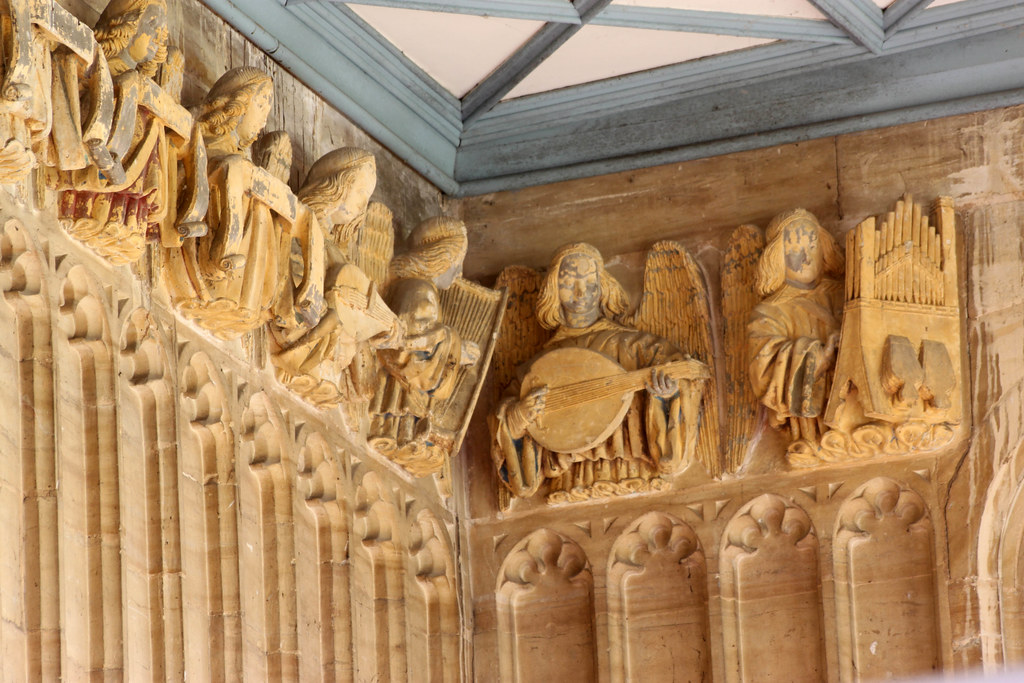
In my view I would be surprised if Notley Abbey rebuilt the whole thing and would suggest that they only rebuilt the chancel, with it's delightful internal frieze of angels holding musical instruments and scrolls.

The building work appears to have been completed by c.1510 and was then glazed. There are significant remains of the original glazing surviving and some of it is still in situ. In the south transept are a series of narrative panels recounting episodes from the life of St Nicholas of Myra as recorded in the Golden Legend. This glass is as aesthetically cutting edge as the building itself and is of the highest quality. English made glass around this time was having something of a revival after a generation or two of declining in quality. Both Henry VII and Henry VIII in their major glazing schemes brought over continental glaziers from the Low Countries and settled them in Southwark and that injection of new skill and new ideas, transformed the quality and characteristics of English glass. The work here at Hillesden, is either by one of these continental craftsman, or was by an English craftsman who was very conversant with the latest Flemish fashions.
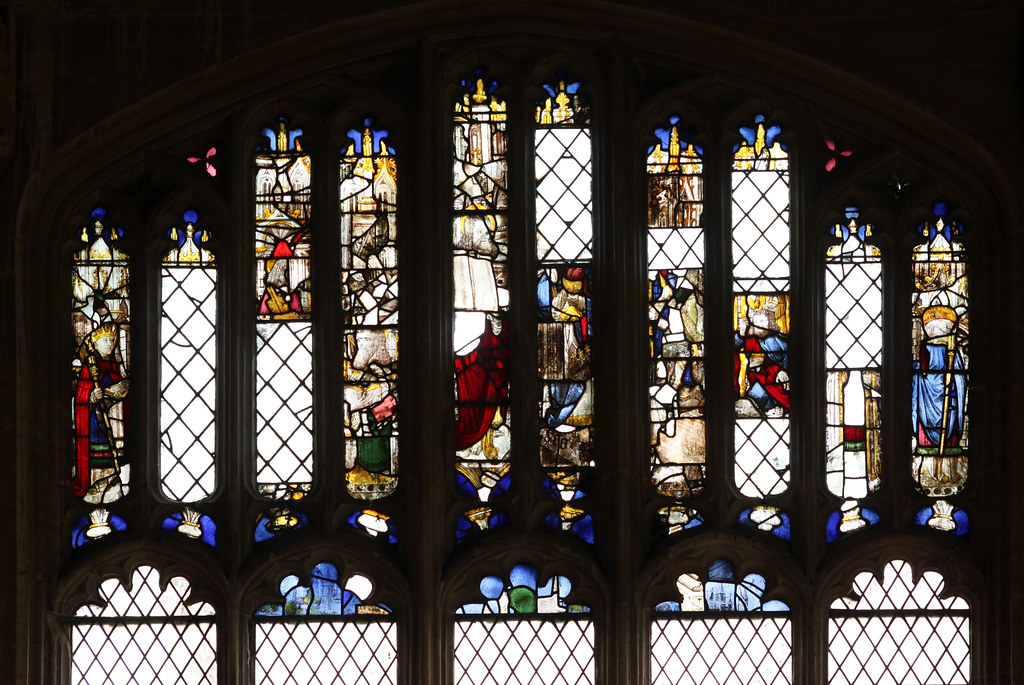
The east windows of the chancel and the north chapel still retain fragments of glazing, which were also by an Anglo Flemish glazier too. The main figurative glazing has gone, but what has been left behind are the tops of the lights and that's what I want to showcase for you here. Each light top has a little landscape or townscape, with hills, cliffs, trees, church towers and castle turrets and the odd Dutch stepped gable. The scenes are all painted on blue glass and highlighted with touches of yellow stain and the odd inclusion of a white turret here and there. In many cases birds swirl around the turrets and in one panel an angel carries a scroll bearing a clear line of plainsong. In their feel, they are reminiscent of the smoky landscapes produced by such masters as the Flemish manuscript miniaturist Simon Bening. Although conceived as a subsidiary part of a now lost composition and although in some cases broken, each panel is a delightful work of art in it's own right. I do hope you enjoy them.

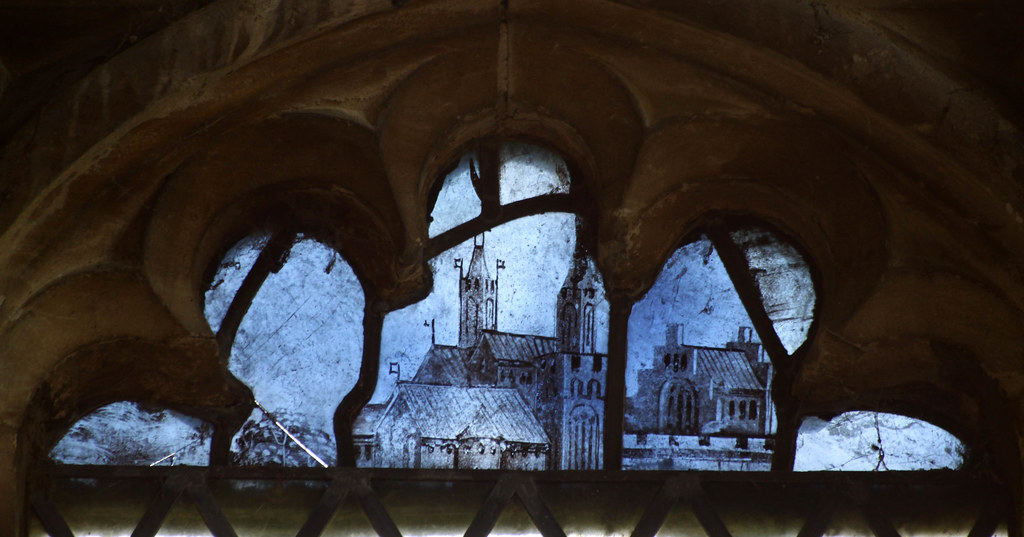

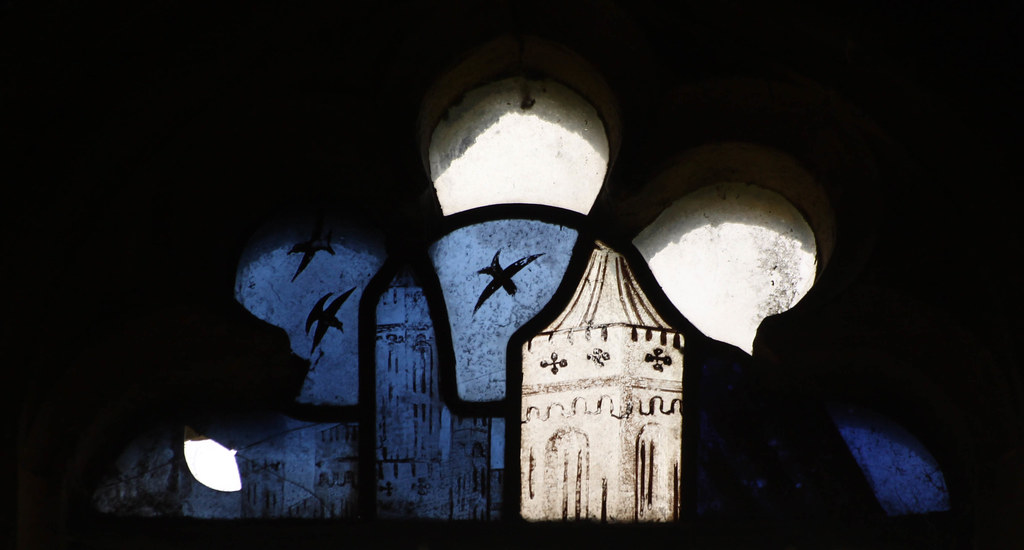
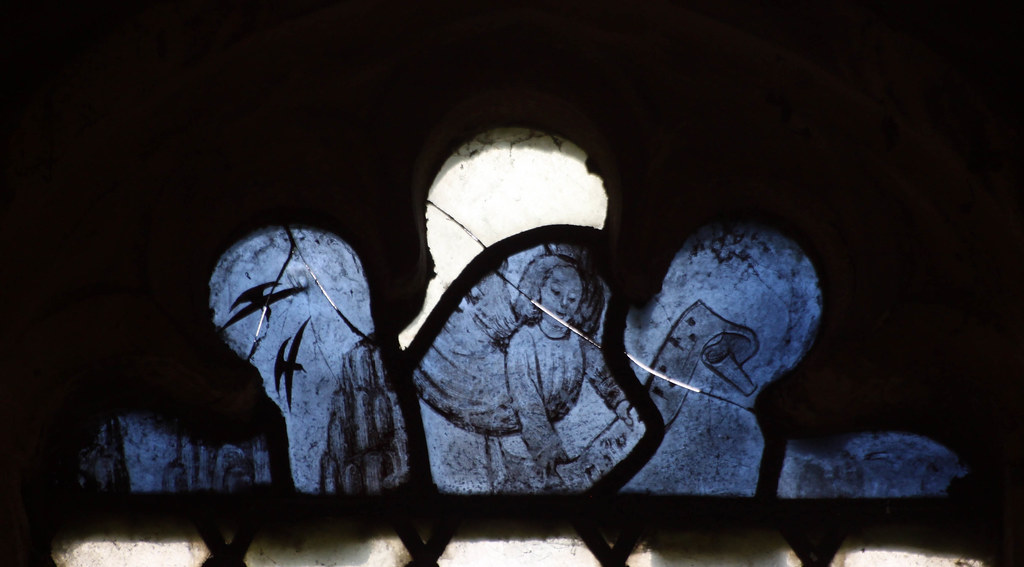

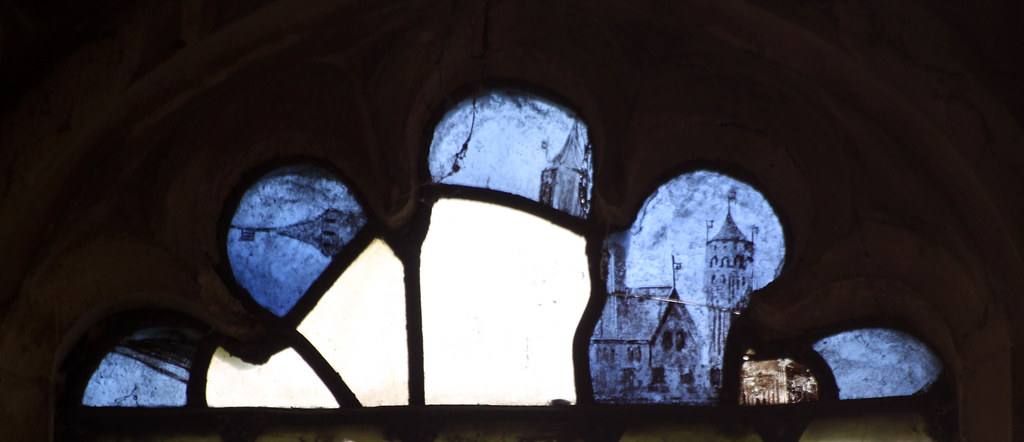

Comments